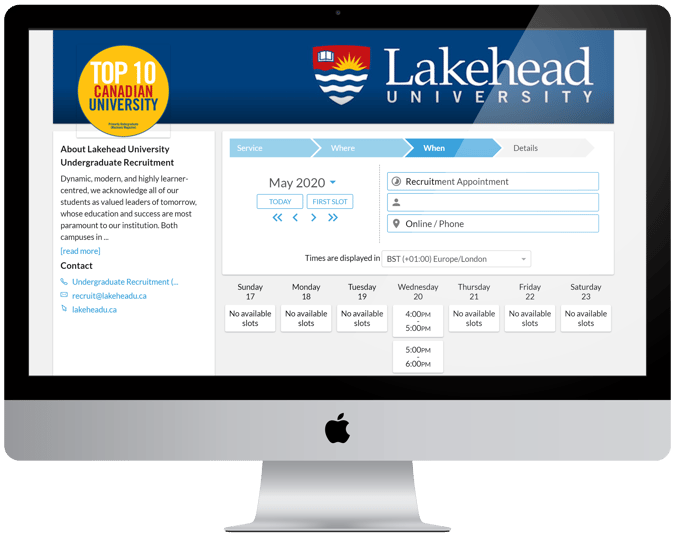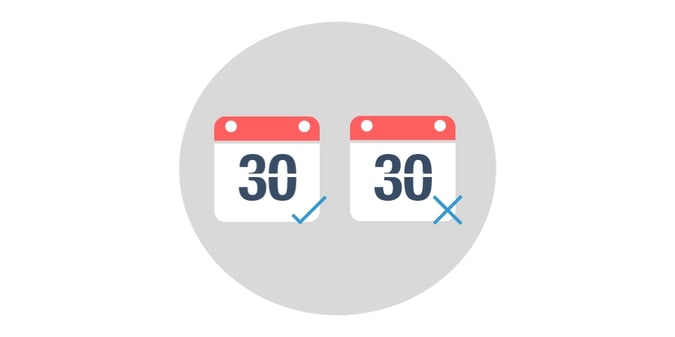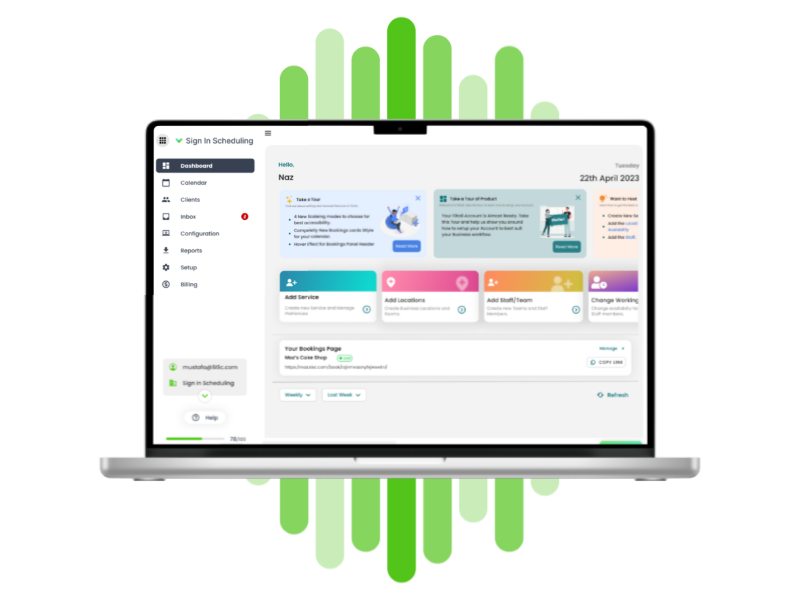If you’re a service-based business owner, you are more than likely familiar with the infamous...
The 7 Types Of Appointment Scheduling & How To Take Them Online
Appointment scheduling is one of the most important aspects of a service-based business. If it isn’t done properly, you can end up missing valuable appointments and losing both money and customers.
But scheduling can be a rather manual process, which is why a lot of businesses opt for automation. This saves admin time for staff, which means more time can be spent on other aspects of the business. It’s also one of the most preferable types of appointment scheduling for customers.
Different businesses schedule their appointments in different ways. Many companies feel that online scheduling won’t work for them in a way that fits them. However, online booking systems, like 10to8, offer a range of features that allow businesses to take all types of online scheduling.
So, let’s take a look at all seven types of appointment scheduling and how businesses can benefit from taking them online.
1. Time-slot scheduling
Also known as “first come first serve’ (or FCFS) scheduling, time-slot scheduling is a popular and straightforward method to stay organized.
It works by offering the customer a range of time slots. The customer selects the time that works for them, enters some basic information, then gets a confirmation notification by email or SMS.
Pros
- Customers can choose an exact time that works for them
- Businesses can offer specific slots on specific days
Cons
- If time slots quickly fill up, it can mean that some customers may not be able to book a slot at all.
- If a customer turns up late for an appointment or an appointment runs over, it can push the rest of the dey behind.
How can you take this online?
This is one of the easiest types of appointment scheduling to take online. Simply sign up to a time-slot scheduling system like 10to8, create your online booking page, and start accepting bookings.

From there, customers will be able to see your availability, easily visit your page, and select a slot.
2. Wave Scheduling
Wave scheduling works well when you have a lot of back-to-back customer visits.
You can offer a flexible time slot, for example, between 1pm-2pm, and customers can turn up at any point during that window. This gives customers much more flexibility to be seen when is convenient for them and allows staff members to schedule multiple people at once. It also allows for better prioritization based on client needs.
The wave system is very flexible because it allows clients to choose their own schedule within your office’s open times. It’s a great way to stagger appointments and also saves businesses from spending too much staff time on booking appointments one after another. Instead, people just turn up during a period and are served in the order they arrive.
One downside though is that this type of system doesn’t work as well with more complicated processes or longer consultations. Businesses will also have to be careful to only accept a certain amount of people during one window to prevent appointments from running over into the next one.
Pros
- Much more flexible booking for customers, as they can turn up at any point within a window.
- Allows staff to easily prioritize the customer’s needs.
Cons
- Doesn’t work well for more complicated processes or consultations that require a lot of time.
How can you take this online?
Wave scheduling is also quite simple to transfer to an online scheduling system, as long as the scheduling program allows for multi-booking a time slot You would set it up similar to time slot-scheduling, but allow multiple people to book the same slot.
Be sure to accurately limit this number, or you could end up with too many people turning up at once.
3. Open booking
Open booking is one of the most flexible types of appointment scheduling on this list.
It is also known as walk-in appointment scheduling and doesn’t give clients a specific time to turn up to their appointments. Without having any set time slots or days available, customers can attend an appointment anytime on a day that suits them best.
Although walk-in services are particularly popular with businesses, open booking has plenty of disadvantages.
It’s hard to forecast demand and footfall; some days might be chaotically busy, but it can also happen that the business stays open for no customers at all. This is particularly common in retail. It’s much more difficult to build and maintain a customer database and analyze appointment behavior.
Plus, Covid made open bookings and walk-ins feel unsafe and off-putting for customers.
Pros
- Complete flexibility for customers.
- Basically no admin work for staff
Cons
- Can be difficult to manage during busy spells
- No reporting or forecasting for busy times, and small chance of building a customer database
- No control over overcrowding
How can you take this online?
To transform a walk-in service or open booking business to a more organized scheduled appointment environment, you first need to identify the average length of your services. Then you can set up the online booking system of your choice and create the slots with the duration you identified.
Alternatively, you can offer appointments with different lengths or multi-bookable times like you saw with wave bookings. This will then allow you to forecast for busy times, better engage with customers, and achieve a better customer experience as you can eliminate queues and long waiting times.
4. Wave Plus Walk-In
This variation of the wave scheduling model combines the walk-in component with a wave scheduling system. It is perfect for businesses with limited space, such as a salon or doctor’s office.
Let’s say you offer ‘waves’ of appointments every hour. You could give customers the option to book a timeframe within the first 30-minutes of that hour, and offer walk-in appointments for the rest.
This gives customers the flexibility of walk-in appointments but also the security of a designated appointment window.
The downside to this system is that it can be difficult to get the correct balance between waiting clients and those who have booked appointments in advance, especially if you are also wanting to prioritize customers based on their needs.
Pros
- Mixed appointment types cater to different customer needs
- Allows staff to prioritize customers
Cons
- Prioritizing walk-ins and wave bookings can be challenging
How can you take this online?
The wave aspect of this type of online scheduling can easily be taken online. You can use a booking system that allows multi-customer booking and customers can book a slot during the wave window. The walk-in side can then be left unbookable to allow customers to turn up as they please, although you will need to be mindful of overcrowding.
5. Priority Scheduling
Priority scheduling is where you reserve certain appointments for people who may have urgent needs. You can then offer them the chance to book an appointment before other clients.
You can do this one of two ways:
- Similarly to how an A&E waiting room works. Patients turn up and are added to the queue depending on how pressing their issue is. However, this can mean that some people are seen much sooner than others who have been waiting a while.
- Reserve a particular time slot for certain types of people. We saw this with supermarkets and grocery delivery services during peak pandemic lockdown where NHS and healthcare workers were able to book priority delivery and shopping times.
This type of scheduling is great for businesses that need to ensure certain customers are given urgent care or attention.
Pros
- Allows businesses to put their most important or urgent customers first
Cons
- Can cause long wait times for non-priority customers and result in dissatisfaction
How can you take this online?
To take this online, you’ll either need an online booking system that allows customer queues or you’ll need to manually approve each booking as it comes in.
For the first type of priority scheduling, customers will need to book onto an online queue. They will then have to wait their turn until something suitable becomes available for them or someone is available to see to their needs. This can be used in hospital or doctor’s waiting rooms, or even in restaurants during the pandemic to allow walk-in diners to wait for a table.
In the second type of appointment scheduling, you simply use an online booking system to offer priority booking slots to certain groups. However, you will probably have to have a staff member manually approving the bookings to check the less urgent customers.
6. Round Robin Scheduling
This is one of the best types of appointment scheduling for sales professionals and call centers. A round-robin is where you offer a set number of fixed-time slots for clients, and a number of staff members are available to take the bookings. The staff members are placed in an order and are booked in that order. However, if one staff member isn’t available, the next person will get booked, and so on.
This provides a fair way for multiple customers to schedule appointments with staff members. It means nobody misses out on appointments and also ensures that one staff member doesn’t end up too busy.
This type of scheduling is great if your office has a lot of people coming in during busier periods but may be less good for planning individual staff schedules.
If you have lots of staff who can perform the same role such as a sales call or quotation booking, or if you want to ensure that everyone gets their fair share of the office’s capacity, this is the scheduling process for you.
Pros
- This method encourages equality when it comes to appointments slots
- Great when lots of staff can perform the same role
Cons
- During busy periods, people might need to wait a while for a slot to be available
- Customers aren’t able to choose their staff member as it’s selected randomly
How can you take this online?
A round-robin appointment scheduler is easy to achieve with an AI-powered online booking system because it doesn’t require any human judgment. All you’ll need to do is decide how many slots you want to offer, days, and times and your online booking provider will pick the next person in line for the booking.
7. Double scheduling
Double scheduling is when you allow two or more customers to book the same slot. This may seem counter-intuitive – it is allowing double bookings after all – but it works very well in some cases.
For example, if a customer needs urgent attention, but the diary is already full, double scheduling allows them to book an appointment and be seen where they otherwise would’ve been turned away.

This type of schedule is also useful when you’re expecting high demand in the immediate future but want to save precious slots for people with more pressing concerns. It’s also commonly used by beauty professionals, like hairdressers who can take on a quick haircut or blowdry while another client is waiting for the hair dye to take effect.
Pros
- Can provide a lifeline for those who need emergency care during busy periods
- Gives businesses more flexibility if they have a full schedule
Cons
- Can cause long wait times for less urgent customers
- Can clog up diaries with overbookings
- It also requires staff members to know how to handle this type of booking
How can you take this online?
Double scheduling is another simple type of appointment scheduling to use with an online booking provider. Many providers allow businesses to offer more than one slot to people, so you’d simply need to enable this option to be able to take appointments.
Overall
There you have it! The seven types of appointment scheduling and ways your business can take them online. Online appointment scheduling can work wonders for your business, clearing backlogs, saving administrative work, and making booking appointments more convenient for customers.
The key is picking the type of scheduling that best suits your needs as a business. No matter how many types of appointment scheduling methods are out there, it’s important not to abandon your standard booking practices and make them work for you.
Regardless of which scheduling process you’re keen on, the 10to8 appointment scheduling program facilitates all of the above. Create a free account today and book away!






Blog comments